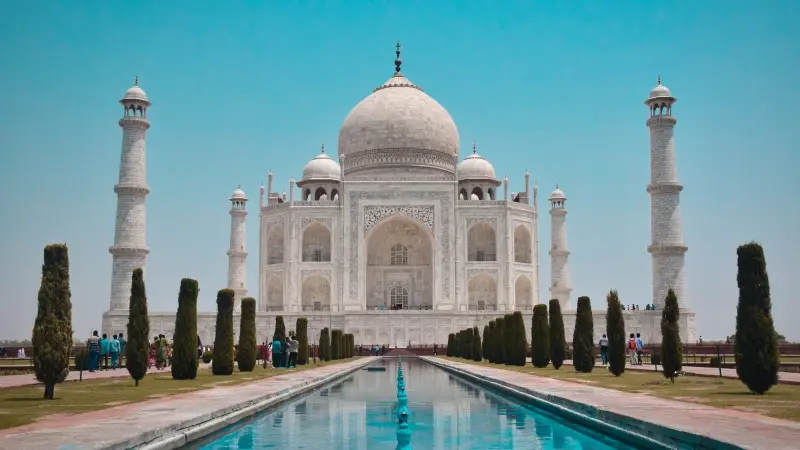The Magnificent Taj Mahal in Agra
Discover the beauty and history of the Taj Mahal, a UNESCO World Heritage Site and one of the New Seven Wonders of the World.

The Taj Mahal is one of the most iconic and breathtaking architectural wonders in the world. Located in the city of Agra, India, it stands as a testament to the eternal love of Emperor Shah Jahan for his beloved wife, Mumtaz Mahal. This magnificent marble mausoleum has captivated the hearts and minds of millions of visitors from around the globe.
Constructed between 1632 and 1653, the Taj Mahal is a UNESCO World Heritage Site and is considered one of the New Seven Wonders of the World. Its stunning beauty and intricate design make it a must-visit destination for travelers seeking to immerse themselves in the rich history and culture of India.
Architecture and Design
The Taj Mahal is a masterpiece of Mughal architecture, blending elements of Persian, Islamic, and Indian styles. The main structure is built entirely of white marble, which gives it a radiant glow in the sunlight. The complex is symmetrical, with the mausoleum at the center and four minarets framing the main building.
The mausoleum itself is adorned with intricate carvings, calligraphy, and inlaid semi-precious stones. The main dome is a stunning feature, rising to a height of 73 meters and crowned with a golden finial. The gardens surrounding the Taj Mahal are meticulously laid out in the Persian Charbagh style, symbolizing paradise.
The Love Story Behind the Taj Mahal
The Taj Mahal was commissioned by Emperor Shah Jahan as a final resting place for his beloved wife, Mumtaz Mahal. Mumtaz Mahal passed away while giving birth to their 14th child, and Shah Jahan was devastated by her death. In her memory, he vowed to create a monument that would be the epitome of love.
Legend has it that Shah Jahan was so enamored by the beauty of the Taj Mahal that he ordered the hands of the artisans who built it to be cut off, ensuring that no other structure could ever match its grandeur. While this story may be more myth than reality, it speaks to the profound impact that the Taj Mahal has had on people throughout history.
A Symbol of Eternal Love
The Taj Mahal is not just a beautiful architectural marvel; it is also a symbol of eternal love. The inscriptions on the walls of the mausoleum are verses from the Quran that speak of the afterlife and the promise of eternal bliss. The intricate details and the perfect symmetry of the Taj Mahal are said to represent the balance and harmony of a loving relationship.
Visiting the Taj Mahal is a truly awe-inspiring experience. As you approach the main entrance, known as the Great Gate, you are greeted by a breathtaking view of the Taj Mahal framed by the archway. The sight of the gleaming white marble against the clear blue sky is a sight that will stay with you forever.
Preserving the Taj Mahal
Over the years, the Taj Mahal has faced various threats, including pollution, erosion, and overcrowding. To ensure its preservation, measures have been taken to limit the number of visitors and to protect the monument from environmental damage. Additionally, restoration efforts have been undertaken to maintain the beauty and integrity of this architectural masterpiece.
The Taj Mahal is not just a symbol of love; it is a symbol of the rich history and culture of India. It stands as a testament to the skill and craftsmanship of the artisans who built it, as well as the enduring power of love. A visit to the Taj Mahal is a journey back in time, a chance to witness the splendor of the Mughal Empire and to be inspired by the eternal beauty of this remarkable monument.

